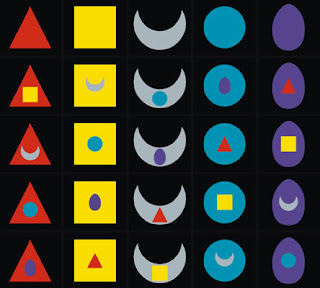Golden Dawn and Nature's Finer Forces
In my previous blog post I went over what Regardie's The Golden Dawn had to say about the Tattwas and Tattwa cards. If you have the book, you may think I forgot to mention Volume IV Book Seven: ADDITIONAL LECTURE ON THE TATTWAS OF THE EASTERN SCHOOL.I assure you I did not forget it. I left it out on purpose. While writing the post, I re-read all of the sections related to the Tattwas. Once again I read Regardie's note about this lecture. The early Order felt this lecture was very important, but the branch of the Order Regardie was part of, it was discontinued. Regardie's note on the lecture reads in part:
As to whether it accords with the general content of the rest of the Order system must be left to the discrimination of the individual student. That it has several points of value will be doubted by none, though few will care to subscribe to the paper in its entirety. Personally, I feel it to be definitely an alien system, which touches the Order teaching in but very few places. The mode of skrying in the Spirit-vision using the Tattwa symbols is sound enough and has been described elsewhere. But other aspects suggest that the two systems are not likely to mix particularly well.
The U.S. branches of the Golden Dawn used this material. I have also seen how the Whare Ra temple of New Zealand rewrote the material for their audience and I like that a lot. Regardie in his work mentions how this additional lecture is based on the Theosophical work Nature's Finer Forces, or the Science of Breath by Rama Prasad. Although I had read Regardie's note on this lecture many times over the last two decades, it was only while writing the last blog post that I decided to look up Rama Prasad's original work. As it turns out, you can find it online at archive.org. Click HERE to download it or read it online. You can read the original work and make up your own mind if it fits the Golden Dawn material or your own personal practice.
I have only skimmed the book and can see how Regardie formed his opinion of the book and lecture. Prasad's book is interesting and shares much in common with other Indian works. The concepts seem so foreign to the rest of the Golden Dawn material that I wonder how it became so popular.
I couldn't care less whether Nature's Finer Forces is in accord with the other Golden Dawn material. It was taken seriously by the original Golden Dawn members and it shows us the theoretical framework used by the Theosophical Society and the Golden Dawn in their approach to the Tattwas and the Tattwa symbols.
Although there is a lot of material to be read, it is the description of the Tattwa shapes and colors I find most interesting.
Akasa (Ether) is black or "no color" and is shaped like the opening of an ear, an oval, or an egg.
Vayu, the Aerial principal is a green or blue circle or sphere.
Tejas, the principle of Fire, light, and heat is a red triangle.
Apas, the Watery principle is a white (or all colors) crescent with its two points up.
Prithivi, the principle of Earth is a yellow square.
The variations in the colors of the Tattwa symbols for Apas, Vayu, and Akasa are not a result of confusion or uncertainty on the part of Rama Prasad or the members of the Golden Dawn. The Tantras also contain variations in descriptions of these Tattwa symbols.



